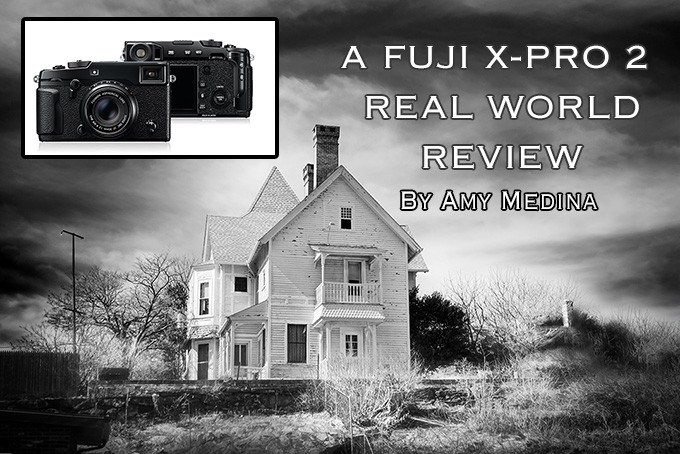
A Fuji X-Pro 2 Real World Review from a Fuji Fan
by Amy Medina
Since the purchase of my first Fuji back in 2012, I’ve been an enthusiastic user of their cameras. Having owned several of their bodies and being such a fan, there were a few new features the X-Pro2 promised that convinced me to jump in as an early adopter, and so far I haven’t been disappointed.
First, let me start off by saying that this isn’t going to be an overly technical review, since those aren’t the type I like to write. These will just be some examples and practical thoughts about a camera I was excited to buy because of the specifications promised in their January announcement. There were three main things that excited me about the prospect of buying the X-Pro2 when Fuji announced it to the world: The new sensor, the weather-sealing and overall improved performance.
Fuji X-Pro 2 + Fuji 18mm f/2
Should I start with my complaints? Let’s get those out of the way first…
Let me just say that in today’s day and age, there’s absolutely no reason to make a camera that doesn’t have an articulating LCD. In my travels around the internet, I’ve heard it said that Fuji insinuated that “professionals” don’t need an LCD that rotates or pivots. If true, that’s a ridiculous assertion. Anyone who puts their camera on a tripod or needs to get their camera up high or down low benefits from an articulating LCD. Here’s one example of professional use that the X-Pro2 will not able to do for me: Quick, high-vantage point photography. I’m often on job sites where I need to take photos using an elevation pole, where the camera is a good 10-20 feet above me. I have to work quickly and can’t fumble around with the phone app in one hand and the elevation pole in another… I need to set the camera on intervals of 8 second shots and walk around and take the photographs with the camera way out of reach… and the only way to frame the shot is with an LCD that can be pointed down at me. With the X-Pro2 I can’t do that. Isn’t it ridiculous that the inferior, inexpensive XA1 can accomplish something the more professional X-Pro2 cannot?
Like it or not, it’s a poor decision Fuji made to not include an LCD that rotates in some fashion… and it really really irks me. I think it’s my biggest complaint.
Fuji X-Pro 2 + Rokinon 12mm f/2 (and PS… being older and having joint issues, this shot would have been so much easier with a rotating LCD!)
The EVF.
This isn’t a big complaint, but it’s one I seem to remember being an issue when the XE1 was released… that it had a better electronic viewfinder than the pro-level X-Pro1. That seems to be the case, at least in some regard, with the X-Pro2 vs. other Fujis. I haven’t studied the spec sheet on all their bodies, but the EVF is smaller than some of the other Fuji cameras (like the XT1), though there are improvements like a much better frame rate and less blackout time after each photo. I’ve personally had a problem with the EVF’s brightness, which was never an issue I remember with any of my previous Fuji bodies, at least that I noticed. I did end up turning off the auto brightness feature in the settings and that has helped, but I’ve still run into issues where I was straining more to see the image and I can’t exactly explain why. Coming from the XT10 where I never thought the EVF was an issue, I don’t understand why the X-Pro2 is giving me a harder time in this regard… but it is. Now correct me if I’m wrong, but Fuji’s top-of-the-line, pro body, well it should have the very best-of-the-best and biggest EVF shouldn’t it?
Another complaint I have is in regards to specific ergonomic choices. Fuji’s placement of dials and buttons and the fact they are highly customizable is one of the reasons I think many of us enjoy using Fuji bodies more than others. I don’t understand how buttons or dials can become “worse” in a new body.
The thing I noticed immediately as compared to my much smaller XT10 was that the thumb dial/button is way more recessed on the X-Pro2 — FOR NO REASON WHATSOEVER. I don’t know why Fuji made a choice to do this, but it’s much more flush with the body, making it much harder to use. This is the dial/button that also controls magnification when manually focusing, which I do a great deal of the time, so I noticed it immediately. I’m getting used to it, but honestly there was absolutely no reason to make this dial/button so much more recessed. I’ve heard similar complaints from other X-Pro2 users with regards to this and other buttons, like the AFL and Q buttons. I don’t use the Q button a lot, but it is quite flush with the body and hard to detect by feel alone. I’ve noticed that there seems to be less customization options as well, and there are certainly a few that would be welcome, like the new joystick they added (which in general I love). It would be amazing to be able to customize the joystick’s center click to activate magnification for us manual-focusers, or to let us customize the front-dial to ISO settings (like I had it on my XT10).
Fuji X-Pro 2 + Zeiss 35mm f/2 Biogon — Acros Film Simulation — No Grain
The old-style ISO dial as I mentioned above leaves a lot to be desired, partially because there’s no other way to select a specific ISO. In theory, it seems like a neat idea and such a cool throwback to cameras of yesteryear. Look, I’m a big fan of the antique camera bodies Fuji uses as its inspiration, but sometimes there’s a reason certain design details get replaced. The pull-and-turn ISO dial is one of them… it’s not easy to change without taking your eye off the viewfinder and it feels a bit fiddly even when you’re staring right at it making changes.
However, as I also mentioned above, this is much less of an issue in practice because of the three customizable auto ISO settings that can be assigned to a funtion button for easy changing. I’ve set up three distinct choices for myself from very wide to very narrow settings, and assigned one of the various function buttons to get to those settings quickly. It helps. It would, however, be a welcome change to have an ISO override setting so you don’t need the dial at all. Not all Fuji bodies include an ISO dial and I know some love it on the XT1, but that’s a dedicated ISO dial, not one combined with the shutter speed dial. I feel Fuji was trying to cram this feature in and I would have welcomed it being either more like the XT1 or XT10.
It Only Gets Better from Here! On with the gushing…
Fuji X-Pro 2 + Fuji 18mm f/2
The Hybrid OVF/EVF viewfinder is one of the things Fuji fans will gush over because it’s so unique. There’s nothing quite like it out there in the digital camera world, and it’s probably about as close to a true electronic rangefinder you’re going to find that isn’t actually a rangefinder.
With its bright frame-lines and electronic details overlay, plus the “ERF” (electronic rangefinder) mode, you’re going to get a really cool modern-retro experience, and that wonderful optical viewfinder, outside-the-frame view. Your focusing patch can use two levels of magnification and can focus either by standard, peaking or split image assistance, and it’s easy enough to toggle between them (though would be easier if that darn thumb dial wasn’t so recessed). This Hybrid Viewfinder is something so completely unique to a handful of Fuji bodies, it’s one of the reasons many will choose the X-Pro2 over others.
The body itself is physically the largest in the Fuji arsenal. It’s weather-sealed, which was one of the items on my own personal checklist of necessities. Compared to my previous XT10 though, it feels massive… but of course it’s all relative. I was in love with shooting with my Leica M8 for a long time, and I’d compare it in size to that body, so it certainly isn’t what I would call “too big”. If you put it side-by-side with something like the new Olympus Pen, the Fuji will look downright giant, but compared to a Nikon D500 it seems quite small. Having used it now for almost two weeks and generally being a big fan of small mirrorless bodies, I don’t feel like the X-Pro2’s size will be something that bothers me, either in weight or physical dimensions.
Fuji X-Pro 2 + Voigtlander 50mm f/1.5 Nokton
The X-Pro2 certainly seems to have a spotless build. It feels absolutely solid to hold and like it was machined in an impeccable manner. It claims 61 points of weather sealing against water, dust and cold. The two SD card slots are a welcome addition, and I’m glad they are separated from the battery compartment (a pet-peeve of mine with other bodies). However, we’re still using the same Fuji batteries as with all other Fuji bodies, which is a plus and minus. It’s great I didn’t have to go out and replace all my extra batteries… however, I think this body could have seriously used a bigger, more powerful energy source. Not exclusively Fuji’s issue… it’s always a problem with the more compact mirrorless bodies: the batteries are smaller, the cameras use more power and ultimately don’t last as long.
The new focal plane shutter with maximum shutter speed of 1/8000 is also part of what drew me to the X-Pro 2. That and the electronic shutter option allows for more flexibility in a variety of shooting situations, including shooting wider apertures in brighter weather conditions. The electronic shutter option is also great as someone who does timelapse as part of my job — I feel more at ease with using the camera for extended timelapse shoots without fear of putting tons of mileage on the shutter.
Fuji X-Pro 2 + Fuji 18mm f/2
Overall performance is so much better with the X-Pro2 than with any other Fuji camera I’ve used to date. One of my gripes with my XT10 (and the XE2, XA1, XE1) was the “wake up” time when it was sleeping… I often found it a little frustrating. With the X-Pro2 it’s not an issue. Everything is just faster… startup time is fast, there is virtually no shutter lag, autofocus is much quicker, continuous shooting speeds are improved, even the speed in which the camera writes to the SD card is faster. With previous Fuji bodies I sometimes felt like operational speed occasionally got in the way of getting the shot I wanted, but I haven’t run into that feeling with the X-Pro2. The camera performs so fast that I’ve been shooting a bit in film-simulation bracketing mode because there’s almost no lag in the camera taking/processing the three shots at once.
Ergonomics are a mixed bag. It’s still a Fuji, and there’s no doubt that Fuji knows how to make a camera suited to a photographer’s needs when it comes to style and function, but like mentioned the push-pull ISO dial is a bit wonky, and that recessed rear dial annoying. Of course the Q “quick” menu is great for a fast settings change, and I like that it’s customizable. The dedicated photometry/metering button is a nice addition, and it’s great to have all the customization options Fuji offers for the others buttons, but they need to expand some of this to include the front and rear dials, and the Joystick center button.
And lets talk about the new Focus-Point Joystick.
This is an absolute pleasure to use and such a welcome addition! I use manual focus lenses a great deal of the time and I like to move the focus point around to the appropriate spot, but lets face it, sometimes that can be a hassle and we end up doing the focus-recompose thing. Well not anymore! The joystick makes it so incredibly easy to move that point around that there’s no reason not to use it. I cannot go on enough about how cool this feature is other than to say all cameras should have it… it’s genius, whether for autofocusing or manual focusing. My only gripe with it is what I said above… I wish I could customize the center click to be magnification (and then a different button to be the “re-center” option, or maybe click and hold to re-center).
Fuji X-Pro 2 + Voigtlander 50mm f/1.5 Nokton
Now, getting down to it, the real reason I jumped on buying the X-Pro2 for it’s fairly substantial price-tag is the new sensor, and I suspect this will be the reason for many. Fuji seems to have been “stuck” at 16mp for a long time, so finally jumping up to 24.3mp with their new X-Trans CMOS III sensor was very welcomed, especially for someone like me who shoots a lot of landscapes, seascapes and architectural stuff. I never was, nor am I a megapixel chaser, but the increased detail is absolutely welcome.
Now, mind you, I’m a huge fan of the Fuji’s X-Trans way of doing things. I find I prefer their color and sharpness over other bodies, and I’m a big fan of their film simulations as a starting point for my own creativity. For the short time I gave up my Fuji gear in favor of Sony, I ended up missing it and going back, and though Sony makes some very nice cameras, I just prefer what Fuji is doing so much more — from their bodies and lenses to the image file quality. I wish it was something I could easily quantify and put into words, but it just isn’t. To me, in additional to just having really high quality files with great tone, Fuji also has a little bit of magic going on that others are missing. Of course, some of that is just personal taste and quite subjective.
The Fuji X-Pro2 produces more of what Fuji fans have come to love… excellent files, and now with a little more resolution. I suspect if you weren’t a fan of the X-Trans files before, you might not be a fan now, though some of the “waxy” skin features people complained about (that I never ran into) seems to have been resolved. I can’t answer your questions about RAW files since on my Fuji cameras I shoot JPG exclusively. I love what I’m getting out of the XPro 2 so far.
Fuji X-Pro 2 + 18mm f/2
Noise performance seems on par with what the XT10 and other Fuji bodies was doing, maybe slightly better, so if you like shooting things in low light, you won’t be disappointed.
With expanded sensitivity turned on, you have the option to shoot from ISO 100 to 51,200. I’ve had absolutely no issues with shooting up to ISO 6400 and keep my primary auto ISO settings with that set as my maximum, and even ISO 12,800 is usable. I’ve always found that I liked the way Fuji balances its handling of noise with less detail smearing that other cameras, and the noise it does produce is a very fine “grain-type” of noise. You’ll hear similar proclamations from other Fuji users, the general consensus being that Fuji does a great job when it comes to reducing noise in low-light-high-iso situations, and doing it in a pleasing way. It’s really more of the same with the X-Pro2. I don’t think there’s any big jump in low-light performance from previous bodies, but there’s no step backwards because of the increased resolution either.
Fuji X-Pro 2 + Fuji 18mm f/2 — ISO 5000 (starring my granddaughter!)
I’ve also had a lot of fun shooting with the new Acros film simulation Fuji has included in the X-Pro2. You can shoot it straight or choose a Red, Yellow or Green filter and you can use no grain or add weak or strong grain. I enjoy sometimes shooting B&W right in the camera and this new film mode is done really well. It has really nice contrast without being overdone (and you can always add more in post processing to taste), and the tones are just so good. It’s probably one of the nicest black and white film modes I’ve seen in a digital camera.
The grain itself has an interesting, artistic quality to it. As someone who actually still shoots film, I’m not sure I’m convinced it really mimics that look … though when combined with high ISOs the noise and grain mix really well and give a VERY good film-like grainy look. At lower ISOs, it reminds me more of a pen-and-ink drawing in it’s perfection, but I find the overall texture really pleasing.
Fuji X-Pro 2 + Fuji 18mm f/2 — Acros Film Simulation — No Grain
–
Fuji X-Pro 2 + Zeiss 35mm f/2 Biogon — Acros Film Simulation — Grain: Weak and ISO 6400
–
Fuji X-Pro 2 + Fuji 18mm f/2 — Acros Film Simulation Red Filter — Grain Weak
100% Crops of Acros with Grain
In Conclusion…
In reality, in today’s day and age most modern cameras are capable of excellent results. We aren’t going to be limited by equipment, at least not in 2016. A lot of what we decide to buy when we pick our camera-of-choice comes down to a subjective opinion on the photo-files, the way we will use the camera day-to-day, the style and ergonomics of the camera itself, and what we feel inspires us most to pick it up and take it with us. At least those are the things that matter to me. I picked Fuji because of the rich and smooth colors with outstanding detail sharpness and because I can customize the settings in-camera to exactly what I want… like picking the film I’m going to use. I enjoy the way the camera feels in my hand and hanging on my shoulder. I love the ability to use that fantastic Fuji glass and also my Leica, Voigtlander, Zeiss and even Minolta lenses. For me, Fuji strikes the right balance of flexibility, fun, form and function.
The X-Pro2 continues to give me all these things with some new added advantages. I’ve been incredibly happy with the results I’m getting, and the improved performance overall is a pleasure. As someone who takes photos every single day without fail, I’m glad the X-Pro 2 is quickly becoming my go-to camera.
You can purchase the Fuji X-Pro 2 at: Amazon – B&H Photo – PopFlash.com
More from Amy
Website: www.DangRabbit.com
Facebook: www.Facebook.com/DangRabbitPhotography
Twitter: www.Twitter.com/DangRabbit
Instagram: www.instagram.com/DangRabbit.Photography
More Fuji X-Pro 2 Samples:
Fuji X-Pro 2 + Zeiss 35mm f/2 Biogon — Acros Film Simulation
–
Fuji X-Pro 2 + 18mm f/2
–
Fuji X-Pro 2 + Fuji 18mm f/2 — Acros Film Simulation Red Filter — Grain Weak
–
Fuji X-Pro 2 + Fuji 18mm f/2 — Acros Film Simulation Red Filter — Grain Weak
–
Fuji X-Pro 2 + Voigtlander 75mm f/2.5 Heliar
–
Fuji X-Pro 2 + Zeiss 35mm f/2 Biogon
–
Fuji X-Pro 2 + Fuji 18mm f/2
–
Fuji X-Pro 2 + Fuji 18mm f/2 — Acros Film Simulation Red Filter — Grain Weak
–
Fuji X-Pro 2 + Rokinon 12mm f/2
–
Fuji X-Pro 2 + Fuji 18mm f/2
–
Fuji X-Pro 2 + Voigtlander 50mm f/1.5 Nokton


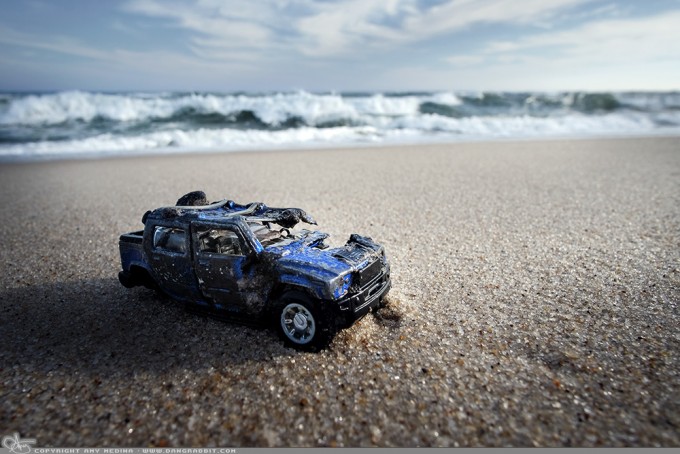
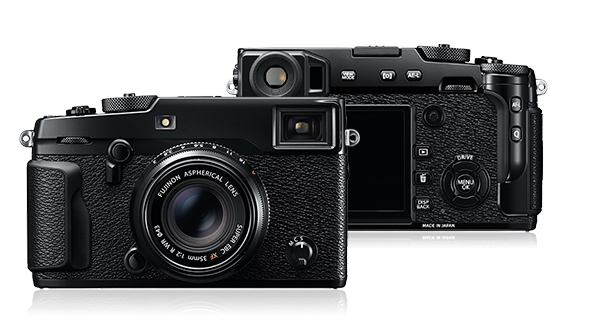
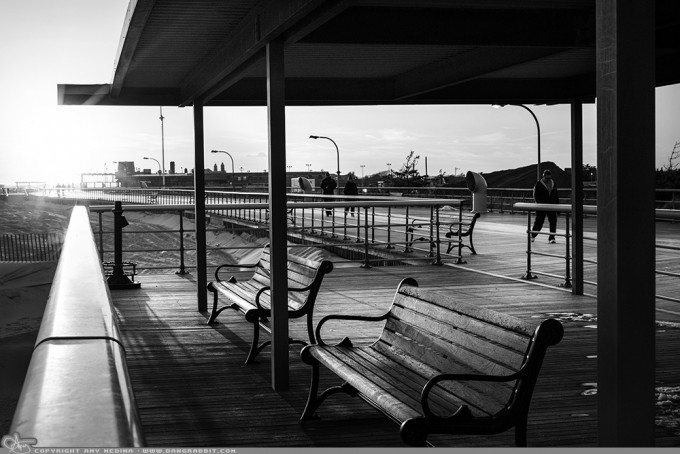
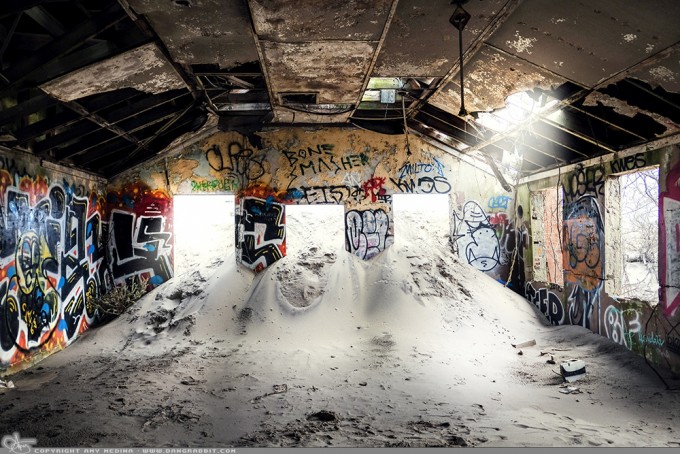
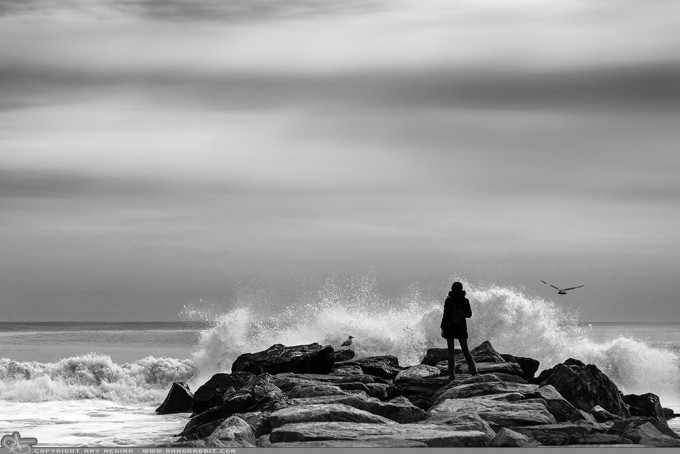
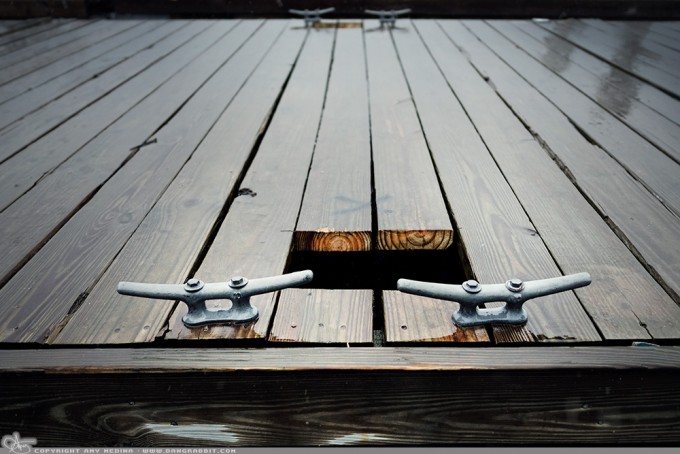
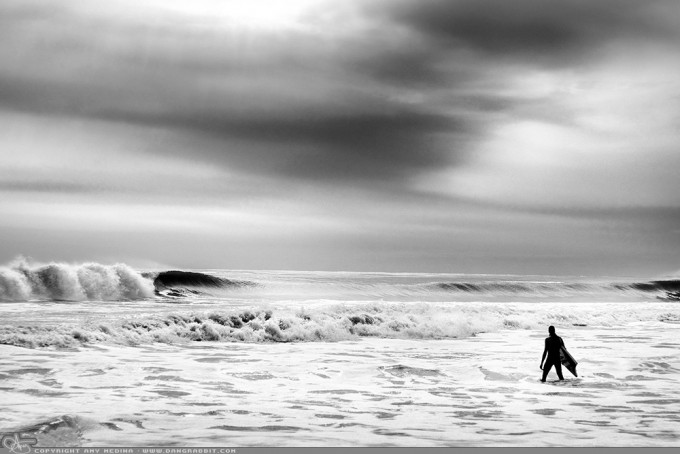


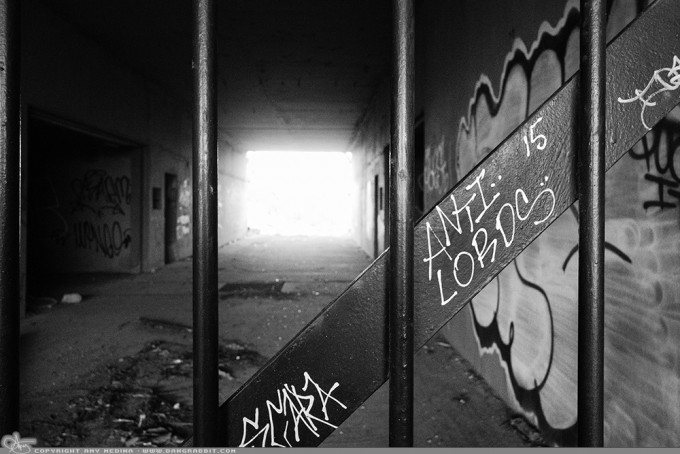
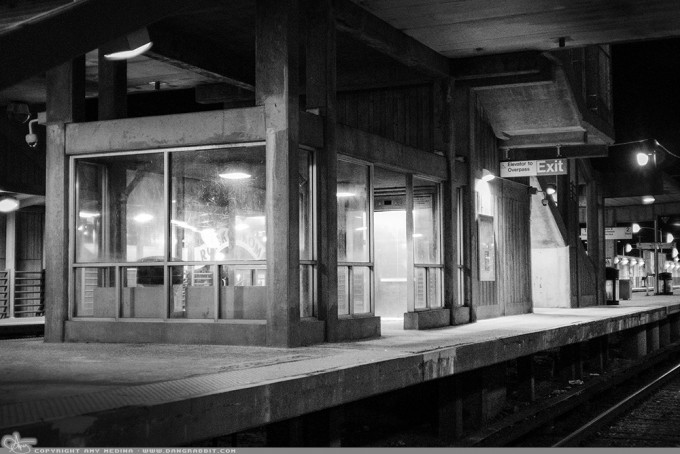
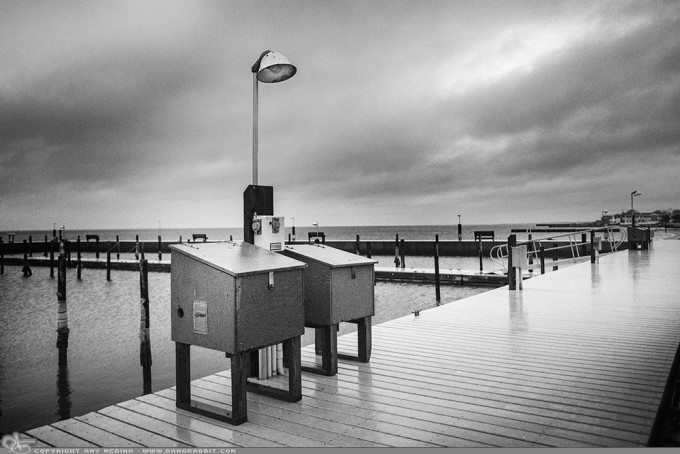
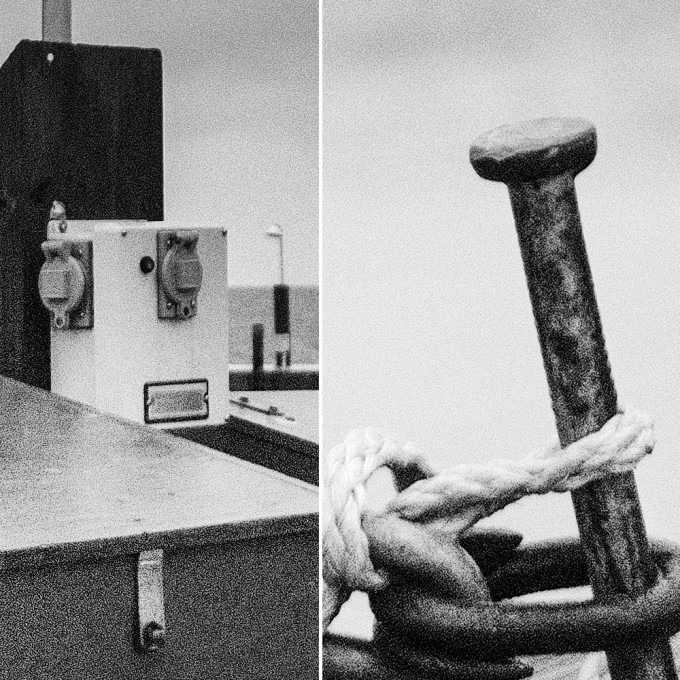
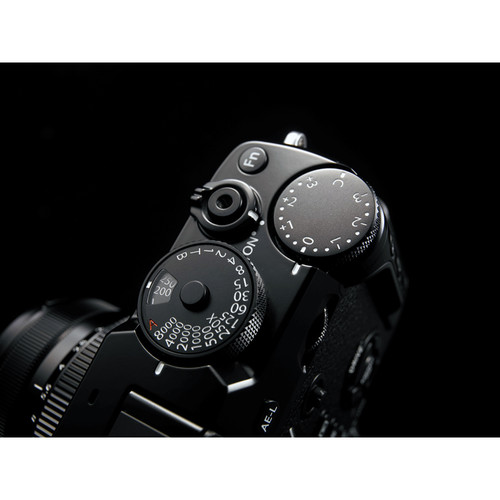
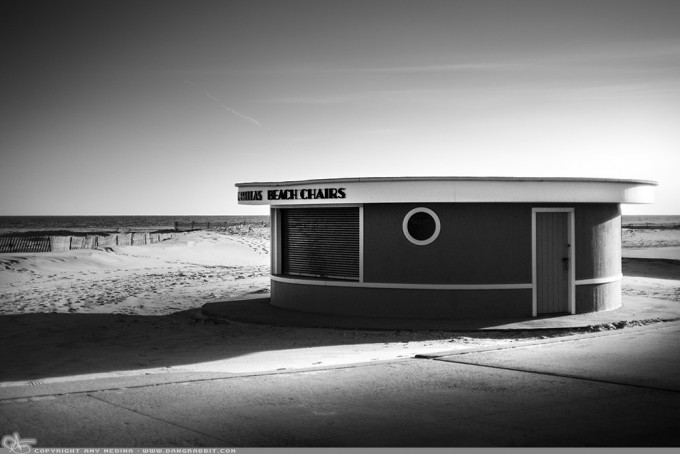
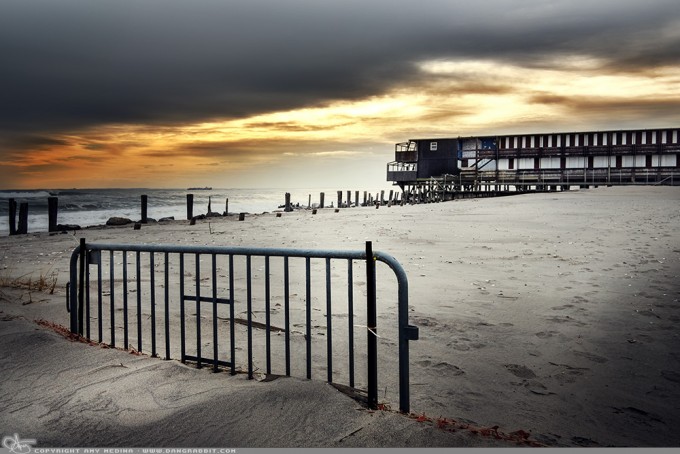
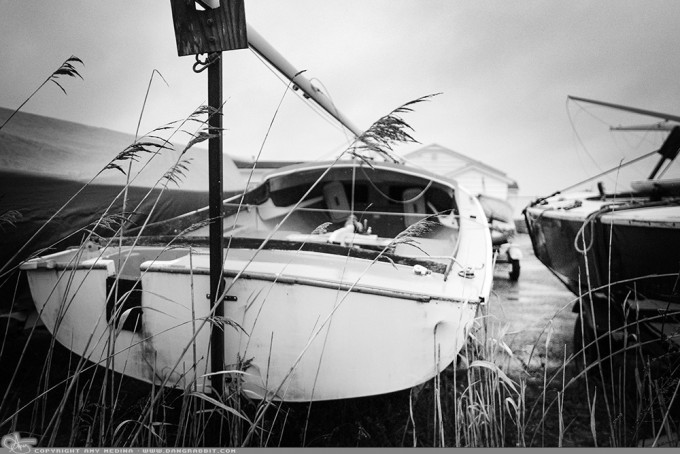
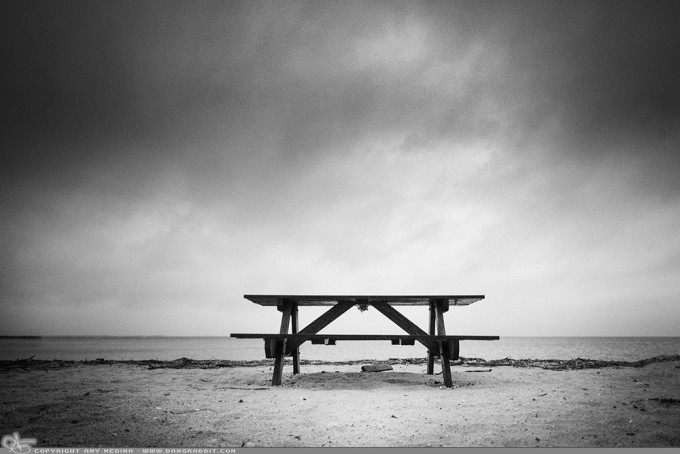
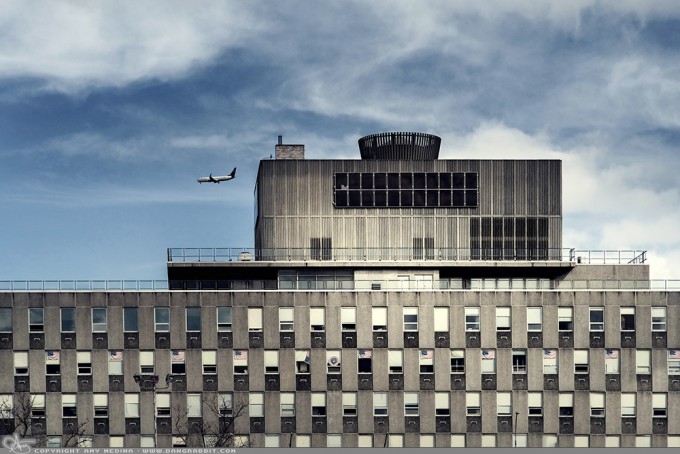
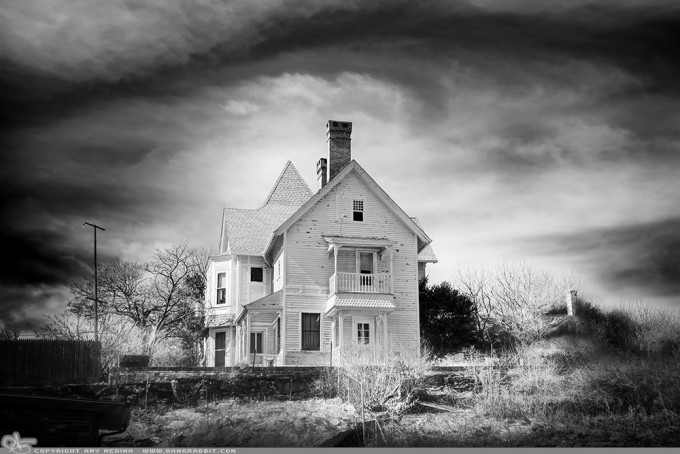
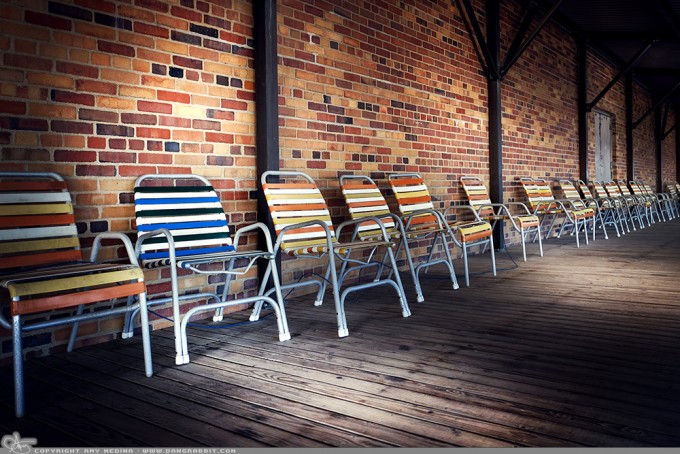
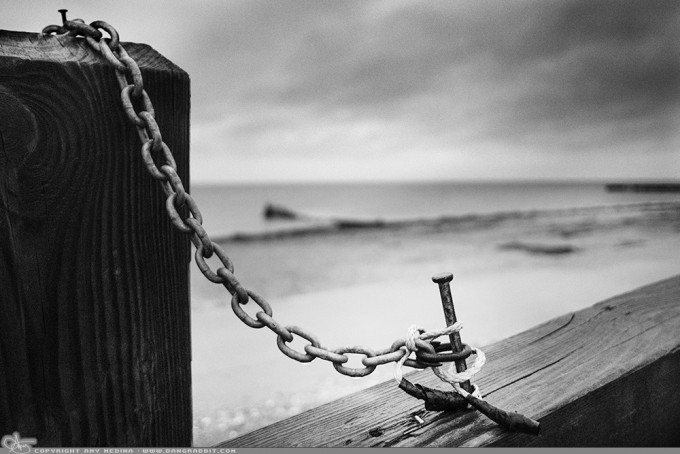
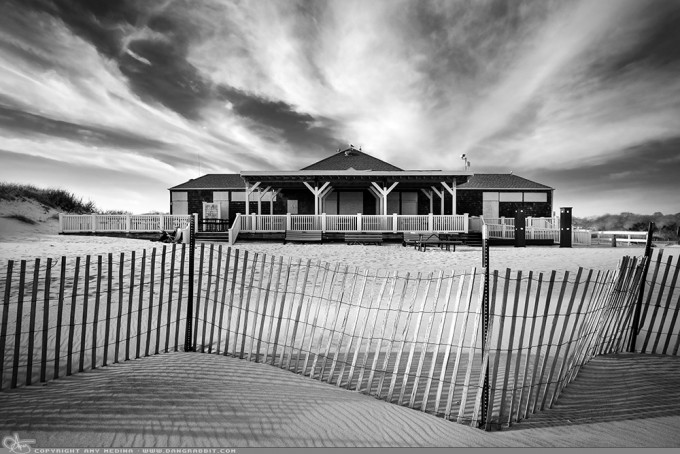
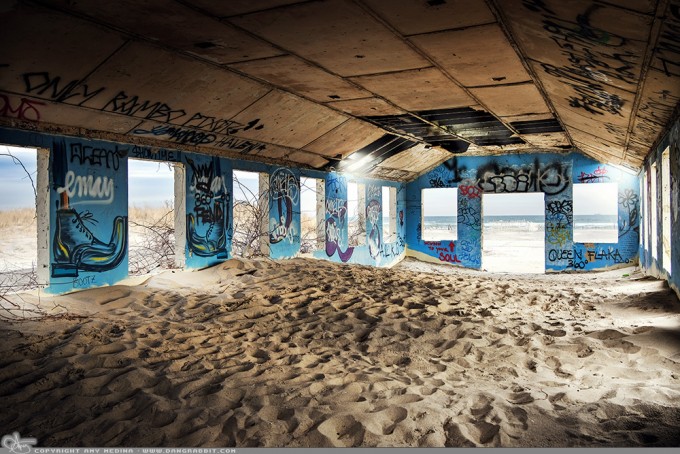

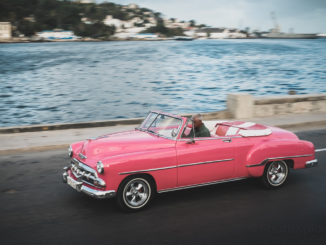

How can you produce a weather resistant camera with a tilting screen, get real.
The problems I have had with my X30 have all been due to the “Tilting Screen” thankfully Fuji have honoured the warranty…..
Hi Amy,
Loved your review of the Fuji XT2 on Steve’s site and the pics you have gotten with it. I have been trying to process my jpegs but I feel that I have not gotten the hang of the settings yet.
My configuration in my X-Pro2s is typically
+3 Shadows
0 Highlights
+2 Sharpness
-3 Noise Reduction
200% DR
I then fine-tune the jpegs in Photoshop.
Any ideas for me?
Thx a million, Ed
Pro’s do not need a tilting screen and this would have just made the body fatter which would probably have made more people moan about that. I think Fuji did listen to Pro’s who generally don’t want it and thats why its on amateur cameras cos they do want it.
I disagree…most pros I know would welcome a tilt screen. To many it is invaluable.
I’m a working full time professional photographer of 30 years and have never needed or thought ‘I wish I had a tilting screen right now’. My XT1’s had them and they felt very vulnerable, I’m so glad the XPro2 despite its faults (the ISO dial is frankly a joke) is much better without that feature. Nice review by the way. I wish I had the luxury of shooting JPEGS but its all RAW for me. I was shocked by how poor the camera performed in low light considerably worse than the X100T at the same ISOs (1600 and above), I was going to use it on a shoot this week but used my Nikons instead as they are so much better. Shame, as it limits the system considerably.
Hi Amy!
Great review.
do you find that the EVF and LCD in the xpro2 is noticeably “darker” or dimmer than the Xt1 and Xt10 (in your instance?) I’ve just received the Xt2 and placed the cameras side by side and noticed the xt2 displaying a little darker.
I can’t tell if it’s the screen brightness or if the new sensor is generally under exposing the scene a little more – how should I compensate for this?
Id be grateful for any tips from anyone else who may have noticed the same issues with their new cameras.
Many thanks!
Lovely images, and a sensible review.
One change that you did not mention was that the X Pro2 is now 14 bit rather than 12 bit. It may not make any difference if you don’t shoot raw, but it seems to give carefully processed raw files a kind of smoothness in transition between close tones. It would make images of silk a little silkier, and images of cream creamier. Or something like that! (I think this impression is independent of the increased pixel count, although I don’t know how to test this ‘objectively’.) I have the X Pro1 and XT-1 too, and as you reported, the Pro2 seems to produce slightly cleaner images at ISO 1600 and 3200 (from raw files with noise reduction set at zero). I haven’t done careful tests, but I find myself being much more willing to go to ISO 3200 with the X Pro2, while I found anything beyond 1600 iffy with earlier generations. (Mind you, I often photograph black dogs in less than studio conditions!)
DxO continues to ignore X-trans sensors (which cannot be tested using their methods and software). This may spare us the constant battle for highest DxO ratings, but it also excludes X-trans cameras from the otherwise highly regarded DxO OpticsPro raw processor.
Many people have raved about Fuji JPGs right from the original X100 (which had a Bayer style sensor). I very much like the “Fuji look” as well, but I really can’t get my head around spending loads of money for top of the line hardware and then throwing away pixels that engineers somewhere decided we could do without. It would be wonderful if Fuji itself could “port” their in-camera processing algorithms to the desktop for us, or license it to a multitude of software developers.
nice review with many good points however if your not shooting raw in camera and creating a jpeg in camera with the industries most powerful in camera jpeg editor\engine your missing much of what make fuji great ive been shooting fuji from x100 thru xpro2 with x10\20\30 and some xe1\2 action and ive never set my cameras to anything but raw plus jpeg
never
did i mention never
love this site and a really nice review
Very nice article. I’ve really enjoyed using the XP1 with my only lens, the XF35mm f1.4. Reading reviews like this has me looking forward to upgrading to the XP2 this year!
Now have using the X-Pro 2 for a couple of months, I would say the following:
I agree that a tilt screen would be nice. I have one on the GX7 and it’s very handy now and again.
I disagree about the size of the EVF, I find its quite reasonable and once I got use to it, I think its really great., Plus the OVF with the super-imposed EVF is very good.
My biggest beef is the large EV dial. Don’t know why its so prominent. It needs to be much stiffer. Even though it has definite click stops it is really easy to inadvertently turn it without knowing. PITA actually.All the other dials etc. work fine in practice.
Using a 23 1.4 the AF is very snappy, no complaints.
The image quality is fabulous and the camera works really well with the couple of Leica Pre-Asph Summicrons and a CV lenses in all manual.
Hi Amy, lovely photos. I just picked up my X-Pro2 the other day, but I’me very disappointed that all of my jpegs are coming out way under exposed. Did you notice this as well? Is there something I’m doing wrong? I have the X100s and have no problems with the jpegs that I get from that camera. I’m confused …
Seth
Hi Seth.
Well, I too, find occasional underexposure with my XT-1 (independent of lens used), but it’s nothing that a “+1” on the Exposure Comp dial can’t fix. Or, you can adjust Shadow exposure comp in menu settings. Good luck and enjoy the superb Fuji X-System!
Hi Steve,
Thanks for your response. I’m sorry to see that I’m not the only one. But, your assessment is more accurate, as I don’t think ALL of my jpegs were underexposed, but too many were. I will try the shadow exposure comp settings as using the +1 on the exposure compensation dial would then leave me looking at overexposed photos on the LCD screen (the LCD screen always shows perfectly exposed photos for some reason). Wish me luck!
Seth
Seth,
I had the same problem. I fixed it by turning off the evf and rear display’s auto brightness. I then manually set the Brightness compensation (from playback menu so that a photo is shown on the display, same photo that you also need to have on your computer screen) then made the adjustment to make the camera match the computer. no more discrepancy. the issue was that the camera adjusts the evf and rear display to compensate for sunshine which messes up the perceived exposure.
Adam
I admit that you kind of lost me when you said you never shoot RAW. I shot jpg only for 2 years on my X100 then started shooting RAW (as I do with my other cameras) and immediately noticed what the camera was throwing away – especially detail in skies.
Really nice and straight forward review. Thank you! I’m a 1st time fuji user coming from Nikon and Leica film cameras and most recently my walk around camera a Pany GX7 (IMO really good camera). At first the Fuji way seemed maybe different, but as I’ve familiarized myself with the controls, its very similar to the Pany, which is a good thing as the GX7 is one of the smartest and easiest to customize and use. So some of the complaints you had were exactly the same concerns I had. For some reason, the EV is darker, and I couldn’t figure out why. Its only on full ev not on hybrid. Your tip to turn off auto brightness seems to have done the trick. I also agree that the front dial is a little awkward to push cause its recessed, but the Pany wasn’t much better. And your thought to make the push in dial on the stick customizable to hit the finder magnification is a great idea and would be really useful, I think it would be perfect to hit once to magnify and click through the magnification levels, big, bigger, normal and also having it so you could maybe click and hold to center the focus point would be the best way.
I also concur the Hybrid finder with its options is unique and its great for walk around and street photography. The other thing I’ve noticed is the resolution of the sensor is a level I’ve never experienced in a digital camera, definitely a big step up from both my older Nikon D700 and also the GX7. I bought 1 lens, the 23 and its really fine. The interesting thing is, I have two Leica Summicron (pre-asph) lenses a 35 and 50. They worked well on the Pany, but its like the Fuji sensor has a high enough resolution to really show what those lenses can do. Its like a rebirth of the capability of those lenses. The 23 is equally as good, which is saying something but its native, and I have yet to try an CV 50 1.5 for that extra almost stop, if needed. I think everything you mentioned about the use and picture quality is spot on. I’m very glad I waited for this camera, its well worth it.
Same here…great review…these days I am testing my xpro2 and I am happy so far…if you like my first test pictures can be seen here!
https://photodefacto.wordpress.com/gridpage/stralsund-testing-fuji-x-pro2/
Great review.. I am loving mine so far, but yes I was disappointed when they mention that there would not be any articulating screen. Where were these photos taken?
LJ: ” There was an article just released that said m43 essentially out resolves medium format film”
Do you have a link for that? Given that medium speed 35mm film can resolve the equivalent of 24Mpx, I’m skeptical and I would like to see how that result was obtained.
http://theonlinephotographer.typepad.com/the_online_photographer/2016/03/when-will-micro-43-equal-medium-format-film-we-have-the-definitive-answer.html
Hi Amy,
Lovely review and photos. I noticed that many of your photos in the review were taken using the XF18mm F2. Although this is lens is not favoured by many, I love what I can out of this lens due to its portability and the wide angle. I just wish Fuji will make a WR version of the 18mm. I agree with all your comments on the X-Pro 2 especially with the tilting screen but I have to say that the X-Pro 2 for me is really a camera that I use in my leisure and when I can take my time to shoot. I will leave the more demanding situations for my X-T1 where I find to be also excellent.
When I still have my Nikon systems (sold them all last years since there just wasn’t room to keep all of them), I like to use the mechanical lens from Carl Zeiss for landscapes and architecture. Can you share some experience in your experience with the manual lens on the X-Pro 2? I presume that you use the M mount Adaptor from Fuji or do you use others like metabones?? If you have experience from more than one brand, perhaps you can share some pros and cons with them.
Again, love those photo that you used in the review.
I mention some of my manual experience in a reply above… I mostly have used Fotodiox adaptors, but my latest one is the Kipon with helicoid close-focus ring, which makes the M-glass minimum focus distance much closer. It’s excellent! The fotodiox one is good too and less than 1/2 the price if I remember correctly, but you won’t get the added close-focus ability. Some people complain about the cheapo adapters… I honestly haven’t had any problem with any from Fotodiox, Kipon, Voigtlander and even no-names, but I always buy through Amazon who has a good return policy if there’s a problem. I will say, I can’t remember every returning any adapter I’ve bought for Fuji, Sony, Olympus, etc… and most have actually been Fotodiox.
Amy and Andrew,
Yes, I too, noticed the many nice images with the Fujinon 18mm. Having never used this particular lens, I do admire its compact size. However, if one is willing to accept the larger size and weight of a zoom on the X-Pro2, I can highly recommend the Fujinon 16-55 f/2.8 R LM WR Zoom! Though a bit slower wide open, I would venture to say that it is optically superior (Sharper!) to the 18, gives a wider angle of view, is much more versatile, AND is water-resistant, to complement the water-resistance of the X-Pro2 body…especially useful when shooting your beautiful seascapes! I’ve made some stunning 18×24 inch poster prints from this combination, that are quite sharp and detailed! (I also use a good tripod and exposure for optimal sharpness.) Thank you.
Quite a few Fuji haters on this forum :). I bought the x-pro2 based on this review! I just ordered one will arrive in the coming days in the mail. Thanks for the very pleasant review of somebody that actually went out and used this wonderfull tool! Instead of the boring spec based review about where the buttons are and what the menu’s do… Thanks again! Lovely images!
Thanks for your comment… I’m certainly not the type to shoot my cat or brick walls and claim I know about a camera… I like to actually leave the house and use it 😀
105 comments; wow! This is a camera, whatever its merits, that doesn’t leave people untouched.
Beautiful pictures, and a very nice review. Thank you!
Amy,
I tried reading the whole review but I found I was so distracted by your beautiful pictures that I had switched to just looking at the photos instead of reading the article. Something that hasn’t happened to me since I was 18!
Thanks for the review.
P.S. I did go back and read it after looking the pics for awhile. Great job on the writing, too.
Dave S.
I have a question about the the Fuji X-Pro 2, that I have asked at some other sites but have not gotten a clear answer. Does the Fuji X-Pro 2 allow a photographer to set the ratio to 1:1 (square) and in RAW file mode together. My X-T1 does not allow me to shoot 1:1 and RAW and that is my only disappointment in that camera. I know I can crop but wish to shoot in RAW and 1:1 ratio.
Thank you.
Mark
Yes, but only in JPG (Fine) Mode, not in RAW. There is a selection for 1:1 aspect ratio 🙂
Thank you for sharing such lovely pictures & a thoughtful account of your experience. One of the best posts I’ve read in a while . Looking forward to seeing a follow up post sometime in the future.
There’s a lot to like in what Fujifilm does with the X-series – they are very professional photographer oriented but precisely there I’m not fully understanding the strategies. A few simple things never seem to get solved. Fujifilm, let’s put one thing straight: even in the Instagram age most advanced users having a decent workflow still don’t want jpg files with film simulations. Why are mainstream tools like Lightroom after 4 years not supporting a fully perfect, professional RAW workflow? Why is there after all this time also not a rock-solid professional flash-range available built around a mature TTL implementation? Why are the X-series still being conceived around such a short-living Panasonic battery, completely missing the ergonomics a professional camera deserves? Why is the true ISO-scale and performance again a bit of kind of game – no ISO100 mode, and the higher ISO’s may beat the older FF-sensors, but that’s about it? I really had hoped that the X-Pro2 was kind of X-series v2.0 – but too my feeling, it’s just all a bit too much of the same 16MP-recipe to be called a true game-changer and that’s the immediate reason why this beautiful X-Pro2 won’t get in my bag, at least not at this price-level.
I love Leica and the more simple minimalist real rangefinder set up.
However lots of photographers I know love their Fujis and produce wonderful images with them.Thanks for the exhaustive review and great photos.
The next generation of the M will no doubt be inspired by such cameras as the X-Pro as the X-Pro itself was inspired by the M.
I’ve been a Leica fan for a very long time, which is part of the reason I still have quite a bit of M-Glass I won’t part with. However, at their price point I can’t buy their rangefinders as much as I’d love to. I tried to buy a used M9 not that long ago, but call me spoiled by today’s technology and the need for additional flexibility. Right now, Fuji has the recipe right for the price point I can afford.
Nice review…no camera is perfect….but if you learn to use the tool as you do the images speak for themselves. I think you could use a pinhole camera and blow my vision through a lens out of the park. As a Fuji user myself it is nice to see a new set of tools arise…and I wish I could get the package in an X-E3 with a joystick focus tool. There is just something about the hapatics of my X-E1 which helps me compose better than my X-T1…probably makes me slow down and think more.
Until then thanks for the inspiration, especially the water shots. Happy shooting!
Amy: Well done, thorough review from a real world users point of view. Appreciate your passion and the time to write this up!…. Daniel.
One of the most recognisable processig for me on the internet the DRabbit style.
Quite something given the millions of photos out there.
I have seen others emulate the processing … quite the complement.
Beautiful captures and a very superb writeup. Many wonderfully practical gems from a users perspective. Being a sony user with manual lens could you please elaborate on the focus joystick feature. This sounds quite amazing!!! Also was any post processing done to your jpegs.
Thanks again,
Wes
I always post-process my photos at least a bit 🙂
The joystick feature is outstanding. it’s just as it sounds, a small joystick in the right position to access easily with your thumb and it instantly moves the focus point around depending on how you move your thumb. Two clicks on the center button and it resets to the center (but I’d give that up for customization so that it would magnify instead). It really makes moving the focus point around so quick and easy.
Thank you for such wonderful feedback. Perhaps one day I will move to fuji if/when the XT-1 is upgraded. I truly find an articulating lcd a must as you so well described :))))
Amy, thanks for the review. There are so many amazing choice right now: Leica, Sony, Micro 4/3, Fuji. We’re spoiled for choice, I think!
I think Fuji is right staying with the APS-C (or Super 35) sensor. It’s the sweet spot as far as hand-held cameras are concerned. I also think that more press photographers will gravitate to mirrorless systems in the future, particularly the Fuji.
I definitely do not like the digital ‘grain’. It’s awful. Michiel953 is right. I also agree with your criticism about the fixed LCD. I can appreciate why this camera (and all Leicas) have fixed LCDs, but when I use my cameras, I always make use of the tilting LCD.
I love the colour and sharpness, but I do not like the b&w simulations. They look ‘heavy’.
I look forward to trying the Fuji system one day. 🙂
Just spotted this. Thanks Karim!
Amy … very nice work.
A few points…
In talks with their X-Photographers, Fujifilm learned that the vast majority of them did not want an articulating screen on the X-Pro2 … that they would prefer to wait for the X-T2 for that functionality. There were also durability and “weatherproofness” solutions for this camera that would have been more compromised had they opted for the articulating screen.
That’s not strictly my opinion, btw … that’s fact.
Agree on the EVF – something more like the Leica Q would have been nice, but I think the optical hybrid viewfinder limits how much eye relief one can get. More res would be nice, though (I anticipate that will come with the X-T2). The EVF does have a faster refresh rate than before, though.
I think the reason for the flush buttons is so that they don’t get accidentally pressed when the camera is rubbing against things, and inadvertently change some settings.
I love the pull-and-turn ISO dial. Very practical. I don’t find myself switching ISOs on the fly very much. Either I’m using one of the three set-able auto-ISOs, or I set something fixed and leave it there for as long as I need it. I should note that a dedicated mechanical ISO control wheel (like the X-T1) was a requested feature by X-Photographers, and was missing on the X-Pro1.
Low light performance, overall, I actually find to be almost a stop better. 12800 looks more or less the way 6400 does on my X-T1, but with the added benefit of 24mp and a bit more DR. Overall it’s a nice benefit.
Nice work with the 18mm f/2, also. That’s an oft-maligned lens that’s actually capable of performing very well. 😉
Some of your points I did address in my review… like the faster refresh rate with the new EVF. And while a dedicated ISO dial may have been requested, that isn’t what the X-Pro 2… it’s shared with shutter speed which is why you have to do the old push-pull thing to make a change. I wasn’t a fan of the dedicated dial either, but that aside the push-pull dial is really not a good solution for fast changes without taking your eye off the viewfinder. I cringe at the thought of making a change with it in a dark concert setting. Luckily, as I said in my review, the three customizable auto-ISO settings help a lot, but then questions why the need for the dial to begin with. I’m not the only one complaining about the dial either… it’s a love-hate relationship I’ve heard from other X-Pro 2 users as well.
As for the articulating LCD, I completely disagree with any assertion that there’s a good reason to leave it out. Don’t call it a fact. Other camera makers have certainly made weather-sealed bodies without a problem with a pivoting LCD. If 50% of photographers say they don’t need it, there’s still 50% of others who do and there’s no reason NOT to do it. It makes the body inferior to others, and there are a ton of scenarios for the professional photographer, from journalistic to architectural, where an articulating LCD is a hugely welcomed addition. Probably the only ones who don’t benefit are the studio photographers who can be tethered to laptops continuously.
I could rant about the LCD problem forever, so I’ll stop. This is all from someone who LOVES the X-Pro 2 overall, so take it in the spirit intended. I want Fuji making the best bodies possible for all of us… not to leave some of us out… especially their biggest fans!
😀
Very well said regarding the articulating LCD, Amy! I totally agree with all your points. I use the XT-1, and have found many instances in which its articulating LCD was quite desirable, i.e., in macro work (away from studio). And in terms of compromising weather sealing or the integrity of the body, I feel that it does not. The XT-1’s implementation of the tilting LCD is quite solid, IMHO. Thanks again for your fine work!
“And in terms of compromising weather sealing or the integrity of the body, I feel that it does not.”
Unfortunately, what we “feel” doesn’t necessarily bare out in facts. The X-Pro2’s weather sealing is actually superior to the X-T1. It’s a more ruggedized body overall, in fact.
Hello Robert.
You are certainly more familiar with the X-Pro 2, and I believe that its body is quite robust and weather-sealed. All I’m saying is that, for my particular usage, the XT-1 (even with its articulating LCD screen) is more than adequately robust and weather-sealed. Thank you sir, and enjoy your photography!
“I cringe at the thought of making a change with it in a dark concert setting.”
You realize that as you lift and make the changes on the dial you can see those changes reflected on the master control panel screen on the back, too, right … or in the viewfinder if you have it set to display?
—
“Other camera makers have certainly made weather-sealed bodies without a problem with a pivoting LCD.”
That’s true. But Fuji determined that within the design engineering parameters of the X-Pro2 that an articulating screen wouldn’t have offered the weather-sealing level they were after, and most surveyed X-Photographers didn’t want it as part of the X-Pro2 design. Again, just stating facts.
—
“…there’s no reason NOT to do it. It makes the body inferior to others…”
I agree it’s a very useful thing to have. But, obviously, in Fuji’s opinion there were reasons not to do it.
Not sure whose body it makes it inferior to. I think the X-Pro2 is the only advanced multi-hybrid viewfinder, rangefinder-style camera on the market.
fyi: When folks see what Fuji is going to do with the articulating screen for the X-T1, hopefully they’ll feel a bit less miffed about the X-Pro2 lacking one. 😉
You do know it is okay for me to have the opinion that the ISO dial is fiddly. Like I said, I know I”m not the only xPro2 user who thinks so, and it would be nice to have other options in customization of other dials and buttons on the body. Yes, of course I know you see the change in the EVF, but having to push and pull the dial to make the change to begin with isn’t exactly the smoothest operation while your eye is looking through the viewfinder. If you disagree, that’s fine.
As for the weather-sealing I still say their assertion is absurd, since so many weather-sealed bodies have an articulating LCD. I could make other arguments about weak-points in their weather-sealing that they could easily have worked on or made an issue of if they wanted to, so I think it’s just an excuse now, and not even a good one.
It makes it inferior to itself. It’s such a good body and one that I do indeed love, but no doubt something so simple could have made it that much better. It’s also inferior to photographers who absolutely need an articulating LCD for their work but who would have loved to benefit from the new sensor and weather-sealing in a rangefinder-style body.
I want to challenge Fuji to do even better. We all should.
I believe you misunderstand what Falconer is saying. Articulating screen are a major point of failure for weatherproofing and all the major brands know this.
The major camera companies put articulating screens on their amateur and semi-pro cameras because it is a very desirable feature. Even lower level Pro cameras have it, such as the Fuji T1, T2, Nikon 500, Nikon D750, and Canon as well.
But when it comes to their very top line pro cameras such as the Nikon D5, Nikon D810, Canon EOS 1DX Mark II, Fuji X-Pro 2, they all, everyone one of them, delete the articulating screen because it is the first point of failure and degrades the body of a professional camera.
Seeing as every major camera company making professional grade cameras do this and have actually stated that is the reason numerous times, you may want to stop referring to the body design as inferior, perhaps for you it is not desirable, but it is not inferior, it is technically very superior.
Great review though!
Wonderful photos and a great “real-wold” write-up. I’m (pleasantly) surprised these are JPEG files — the Fuji puts out great quality compressed files. Of course the talent behind the camera helps a lot!
Thanks for the review!
Great photos!!
However there is a softness to all the photos that is not to my liking. e.g. the castle photo where I wanted the feel the roughness of the stone wall. May be its just me…
Thanks again!
Click on the photo to see the larger version. The blog auto-resizes them so sometimes they don’t look as sharp as they should.
Great photos Amy! Love your shots of Jones Beach.
Excellent photos! Mood and color are at great play here!
Bought the X Pro 2 and returned it. A very very mediocre camera for the price charged. Really? $1700 for this hunk?
Asif, you say “a very mediocre camera”, without evidence to support your assertion. In what specific way is it “mediocre”??
You bought it and returned it. ‘Nuff said for consumerism.
Always good to see your posts and photos Amy. I shoot with Fuji now and agree completely, I love using my X-T1 and it’s great to see Fuji continuing to make unique cameras that are wonderful to use and produce great files.
Keep sharing 🙂
Nice review and great photos! thanks for sharing with us. Been shooting Fuji for 2+ years and still happy with my XE2, Will let the xpro2 subside a little although im sure its worth the initial cost.
Amy a very good xp-2 review, I am a xp-1 user for the past 18 months, I have tried the xt-1 , but decided I preferred the OVF in my xp-1, rather than the EVF in the xt-1, In fact I only use the OVF in my xp-1, however I will upgrade to the xp-2 mainly due to the 24.3 MP, I only use the 18/55 lens with my xp-1, this covers all the shots I need, I am thinking of purchasing the 35 mm 1.4 lens, for my street photography, I love the tactile feel of my xp-1, it reminds me of my days using Nikon , Blads & Rollie TLR classic cameras. I loved your images from the xp-2.
I just got the xpro2 with the 35f2 and I’m very impressed. It’s replacing my M9 with a Zeiss 35f2. I love having a camera that is constantly on me–plus I’m mostly a portrait photographer using a medium format and having the xpro2 in the bag is a perfect compliment. Nice write up, I agree about the articulating screen — I would take a look at the other mirrorless cameras but I’m big on OVF
Hi Amy thanks for sharing. I’m impressed with the photos. I have a Pentax K1 on preorder. I did not have the problems with the K3 that you and others did. You have me wondering now, with how great these images look! Ultimately, it’s no doubt you that makes them great. I really like your use of vignetting. It makes me want to look inside and around the images.
A great review, insight and images.
I would have to agree with your pros and cons about the X-Pro2 nearly 100%.. if not 100%.
I have very few gripes with the X-Pro2 and although I wouldn’t necessarily say this is the best camera I’ve ever used (what camera really is the overall best anyways?), it’s probably the funnest and most enjoyable, despite some tiny little quibbles.
I totally agree that at least the rear command dial and AF-L & Q buttons are too flush with the body. The rear command dial isn’t flush, but it is pretty recessed into the body. Rotating the dial is not an issue, but trying to push it in as a button takes an extra more heavy fingered approach you are sure you get a positive button press the first time. Fuji really could have made that less recessed for easier use. In regards to the AF-L & Q buttons that’s located basically on (or just to the side) of the integrated thumb grip/rest area.. they are both definitely flush with the body and hard to blindly feel out when your eye is up to the viewfinder. With consistent placement of my thumb in the designated thumb grip area, and with practice, I’m learning to use muscle memory to shift my thumb over to the correct position to push the desired button. Still, sometimes as you’re working a scene or shot, you reposition your hold and grip on the camera and even that could throw off your confidence to blindly reach for the AF-L or Q button.
I don’t usually go into the Q menu too much, so that’s not as big a deal, but I do use the AF-L for back button focus and focus lock. I think the old X-Pro1 had the buttons protruding slightly more so that you could feel some distinction where the 2 buttons are placed. I don’t think I need both to protrude out slightly, but at least the AF-L as that’s used more than the Q button. I think I may need to invest in a tiny piece of Sugru to help raise and bump out the AF-L button just enough for easier blind acquisition if my muscle memory practice to find the AF-L button isn’t working out.
I also agree that adding an option to control the center press of the joystick to alternatively magnify focus area would be a great idea. I mean the joystick is probably ergonomically the easiest to reach and if you’re controlling the AF point with it anyways, it makes sense to have magnify by center pressing it.. certainly easier than pressing the rear command dial presently.
Although I do find the level of customizing buttons generally sufficient, I would still hope that they should update via firmware to add extra customizing to the AF-l & AE-L buttons.. more so on the AE-L because I rarely use that button as a half press of the shutter button works for my exposure lock.
Overall, the X-Pro2 has met all my wants I wanted originally from the X-Pro1 and exceeded them with some other features and improvements. Briefly stating, overall speed and fluidity in using the X-Pro is super fast and smooth and the hybrid viewfinder finally has an excellent refresh rate for the EVF (don’t feel it’s a few steps behind me) and the OVF finally has a way to confirm focus via the electronic rangefinder (ERF) small EVF overlay in the lower right corner… additionally, because of the ERF, I finally have an option to manually focus with the OVF and get real time frame line correction update. This truly is the digital rangefinder experience I always felt missing from the much loved X-Pro1 and X100/X100S (now & first “fixed” in the latest X100T)… and thank you, Fuji, for adding the diopter corrector!
I tried Fuji it was always hit or miss mostly miss for me in my shoot unreliable but I always enjoy your photos Amy thanks for the article
Luckily we have tons of camera option in 2016! Thanks for replying and glad you enjoyed the photos 🙂
I just received my X pro2 yesterday. I have only managed to upload a few Jpegs as i need to upgrade my lightroom account to the latest firmware for the raws. BUT….my, oh my, the ACROS simulation is STUNNING!!!! Best B&W jpegs i have ever seen BY FAR! Nothing comes close! absolutely nothing! …and the files just get better the more you crank up the ISO! Best camera i’ve had period!
The shutter sound is just wonderful! (I am coming from Sony A7 series though, which is just horrible) Turning the camera on from cold is lightning quick! (Again i am coming from A7 series which again is just horrible)
I’m so happy to have an OVF again. I thought i wouldn’t miss it but squinting up to a mini tv for long periods of time hurts my eyes after a while, but having both is just great!
Love, love, love this new camera
Glad you’re enjoying it Steve! Funny, I almost mentioned the shutter sound in my review… it’s such a nice sound (and yes, compared to Sony’s A7 CLUNK it’s so much better). Acros is a ton of fun, I knew you’d like it!
And dare I say… what they’ve done with the OVF and the new “ERF” mode… this is something Leica should have done years ago. If they could figure out how to do a real rangefinder with digital overlays and even the picture-in-picture… Well Fuji just about beat them to it (minus the real rangefinder). It’s quite amazing.
I agree and I think on the Next M there will be something very similar 🙂
“If they could figure out how to do a real rangefinder with digital overlays and even the picture-in-picture”. It could be nice if Leica would had a hybrid OVF. Assessing that the cannot make a hybrid OVF is a very poor and ignorance statement. Older as well as newer Leica cameras had and have many innovations that have not been beaten yet. This omission, more likely is part of their marketing technique and product evolution.
I have two issues with Fuji X cameras/lenses:
1.Fuji X format lenses cannot be used in any other camera.
2. I used to own an X-E1 and it was a horrible camera, that has malfunctioning issues as well as design flaws. I hope that X-Pro2 is a better device.
After all you have made lovely images and thank you for the review.
Beautiful images Amy. Just thought I’d give you my experience on the brightness of the viewfinder. I find it much harder to see the finder on my old xe1 and x100s outdoors than I do on my xt1 and I think it’s due to the positioning of the finder. When it’s on the edge (ranger finder style) I find far more light gets in around my face while the central position on the SLR style xt1 gives more shadow for a clearer image. Try cupping your left hand round the eyepiece and see if that helps. If it does a larger replacement eyecup on the camera would help.
Using the hand around the eyepiece is a habit I got into a while back with the XE1, but what I notice with the XPro2 is that even when I do that I still sometimes struggle. I don’t know if the EVF is just smaller or “deeper” or something… but there’s clearly something different about it than on previous bodies. Like I said, turning off the auto-brightness option has helped quite a bit.
Let me add, the metering seems different on the camera too, with a slight tendency to underexpose maybe (which could account for some of the EVF darkness). There are new metering options so I don’t know if that means the others changed their algorithm a bit. I’ll have to play with it. I always used “average” before but maybe “center weighted” will be better for me now… have to see.
Hi Amy, you are very talented. I loved your images. And I love you too. One of your biggest fans!!!
Thanks Louis – You’re the best! 😀
Intrigued by the vignetting in a number of the images. Really adds atmosphere IMO. Would be interested to know if that was the lens, or the programme you chose in camera, or pp.
I really, really agree with what you say about fixed-screen LCDs – I have rusty hinges, too. Would actually be a deal-breaker for me.
Hey John, most of the time I add the vignetting in post. Some of my older lenses give me some nice vignetting that I enjoy though.
The lack of pivoting LCD isn’t a deal-breaker, but it absolutely makes life a little more difficult for those of us with “rusty hinges” (love that saying!)… and I think there’s no excuse for them excluding it honestly. It was ALMOST a deal-breaker for me except for my impatience about wanting the new sensor and weather-sealing. I can imagine there will be folks who wait for the XT2 just for this reason.
Actually prefer the lack of pivoting lcd – don’t know whether it’s warranted, or not, but I have this gut feeling that the pivoting bit is an extra point of failure and dirt accumulation. Could some XT1 users weigh in on their experience with this?
Oh yes – love the pictures!
It looks like I have to buy this amazing camera!
Enjoy it!
@Amy: hank uou for an interesting read, tempting camera, great lenses, mostly fine images.
A question about the 100% B&W crops: The grain in those crops has a “lozenge” like shape (which would be ugly in a big print), that is very digital, non-analogue. I have, fortunately only occasionally, encountered the same phenomenon in (professional, 16base) scans of my B&W negatives; the sign of a bad scan as far as I’m concerned. A 100% crop of a good scan of a B&W negative shows “real” grain, which prints well.
Can you explain?
Too many typo’s. “@Amy: Thank you etc”.
I mention it a bit in the review… I’m not convinced their grain simulation is very film-like at lower ISOs, I’m much more pleased with it when it mixes with high ISO shots and a little noise. I also was using the “weak” setting most of the time, so you might find it more pleasing at the higher setting, with more actual grain added.
Luckily, you can turn it off if you don’t want it at all. Usually I’d rather add grain in post if I want it… But Fuji gives you those options either way.
Thanks for your reply Amy!
Cheers,
Michiel
I stopped reading after your complaint about the LCD but I like the pictures very much!
You should have continued because I get most of my complaining done right at the beginning 😛
Great review, with photographs well chosen to illustrate and emphasise the points being made therein. Loved the picture of the house (Fuji X-Pro 2 + Zeiss 35mm f/2 Biogon), it has a PAINTERLY QUALITY. I use M43 and I hope there’s a 24MP sensor in the future for us M43 folks who need higher resolution and low noise for landscape and architectural work. Here in India, Fuji is exorbitantly priced so I guess I’ll stick with Olympus E-PL5 / Panasonic GX1. But as of now, can’t really hope to come any where close to Fuji APSC IQ. Thanks for the very objective, informative and interesting review. I wish you all luck in your future endeavours, Amy…Subroto Mukerji, New Delhi, India.
My other system I use a lot for pro architectural work is actually m4/3 and I recently just bought the Panasonic GX8 for it’s increased 20mp sensor… I think we might be a year or two away from 24mp from them unfortunately, but at least they jumped to 20 with the latest Panasonic and Olympus.
Amy, I’ve always admired your work. Lovely images, well defined subjects, thoughtful compositions, and attention to detail sets you apart. Thanks for the review!
Thanks so much for saying such nice things! Glad you enjoyed them 🙂
Beautiful!
Thanks!
Amy,
Thanks for a useful real-world review, and your photos are lovely (as always). I have to agree that the XP2 has that special something that makes me want to grab it and shoot with it. I was looking to get back to basics, since some of my most satisfying photography was when I used my M9 with a permanently mounted 50mm summicron. I wanted to recreate that feeling in a modern, responsive camera, and the XP2 ticks all those boxes for me. I put the Fuji 35 f/2 on it, and I’m thinking about “gluing” that lens to the camera.
Regards,
David
Gosh David, I’m so with you on the M9 thing (though for me it was the M8)… I’m in love with my Zeiss 35mm f/2 Biogon paired with the Fuji. The Fuji 35 f/1.4 is a gorgeous lens, but I think I’ll end up springing for the f/2 because of the weather-sealing.
Enjoy!
I also have this Biogon. Thought it has a kind of classic look. Do you think so ?
Hi Amy. I see you’re considering the Fujinon 35mm f/2 lens for its WR feature. Well, having had the Fujinon 35 f/1.4 previously, I too, went with the 35 f/2 mainly because of the WR sealing, but also, after reading reviews that stated that the 35 f/2 was at LEAST as sharp as the 1.4, and also had that same Fuji “magic”! I can vouch for those conclusions, and I find it to be extremely well-built, and with faster, quite silent AF. It is a perfect mate for the XT-1, and I would think, the X-Pro 2 as well. If you have any other questions about it, please feel free to contact me, and I’d be glad to help! Thanks again for your superb articles and photography!
Good to hear Steve and thanks! 🙂
boring pictures, and useless words…what the meaning of that review ? who should care about your opinion ? More you talk about equipment, less you talk about photography, and that’s why pictures are so poor at the end…As long as you’re not making money traying to make people buying cameras tru your affiliated links of course.
Frankly, I care. I find the pictures very engaging and her thorough review of the camera well thought out and written. I am looking at an x-pro 2 and this was a very helpful hands on review. I know we’re not supposed to feed the trolls, but you are the worst kind, both rude and incorrect. Your ignorance is only matched by your lack of manners.
I truly hope English is a second or third language for you, because your grammar is atrocious. Looking past that, your attack on her review seems baseless. She provided an ample number of images that demonstrated image quality in a variety of lighting conditions, ISO, lenses, film types etc. Since when do review images need to qualify for inclusion in a portfolio?
You wrote – “I truly hope English is a second or third language for you, because your grammar is atrocious. ”
Why?
If you don’t have anything nice to say, don’t say it at all my friend. Try spending more of your time being positive instead of providing negative comments to bring others down. It only shows your true colours. Maybe you are unhappy?
Thanks for the backup LJ — I think Pask just woke up with his cranky pants on 🙂
Pask, you are certainly entitled to your opinion. My opinion doesn’t need to matter to you, you can walk away and ignore it, that’s fine. Every single day without fail I take photos and share them online, and that’s how I use my time instead of making nasty comments to people on the internet. You should try it. Cameras are more enjoyable than keyboards.
Perhaps you would like to share your genius? I think that this a great review. Written from a photographer’s point of view and not locked up in a lab. The photographs are great btw.
Troll, and this kind of talk is not allowed here, so bye bye. I have a zero tolerance for anyone who attacks here. If you want to critique, then so be it. If you want to be rude, mean and nasty, visit DPreview.
Well said, Steve! Count me among the many who admire Amy’s photography, as well as her insightful, detailed, and thorough real-world review of the X-Pro 2!
Right on, Steve. I thought the photos are rather nice.
Thanks Steve, kick that Trump supporter out of here.
Dude! This is about photography, cameras and photographers, NOT politics.
oh dear, Pask…..did your mommy not hug you enough?????
When you have the cojones to put your words and images on the web, then maybe, just maybe we will countenance your emotionally stunted opinions.
Wow amazing!!!! Do you shoot raw or are these out of the camera jpg?
I mentioned in the review itself that I only shoot JPG on my Fuji cameras 😀 — so these are JPGs. I do post-process them to my own taste, so they aren’t straight out of the camera.
An excellent real world write up, Amy. Those jpeg files look great. Any camera that makes its owner want to pick it up and go shooting is a winner. Fuji do that really well.
Thanks and I agree… Though I have some little complaints, Fuji overall does a great job in designing their bodies.
Sad fact: You can’t have BOTH “the biggest EVF image” AND the optical viewfinder, at least not without making the camera even larger. They have to share the same eyepiece optics, and that means the EVF and OVF sizes are tied together.
I suspect that most people who don’t really use the OVF all that much will be happier waiting until the inevitable X-T 2 appears, as it undoubtedly will have the new sensor and feature set plus the larger EVF everyone likes so much on the X-T 1.
But I certainly don’t discourage those people from buying an X-Pro 2 now… because that means that eventually they’ll trade them in on X-T 2s, and the market will be flooded with lightly-used X-Pro 2s that people like me will be able to afford to buy… just as happened to the X-Pro 1 when the X-T 1 came out.
Bingo. Well said. I’ll add that I’m hoping Fuji decides to add a larger capacity battery to give even more performance while getting back up to an acceptable shots per charge count. (I feel like the X-T1 is as low as I’d like to go in that regard and supposedly the X-Pro2 is considerably worse)
Well I’m not an engineer so I can’t speak to their ability to make the eyepiece larger without making the whole camera larger… though I’m going to challenge that idea at least in my mind seeing how the xPro2 is probably one of the largest mirrorless cameras already (not counting the Panasonic GH line). I can at least speculate that there might have been room for a millimeter or two more without inflating the body to huge proportions, and I don’t think that’s an unreasonable assertion.
That said, I think you’re right that people who don’t need the OVF will certainly be happy with the XT2 when it arrives, but as someone who paid a premium for their highest level “best” body, and who really prefers a weather-sealed rangefinder style body (viewfinder on left), it’s a little annoying that it can’t also have the best EVF… and that the older bodies, the more “inferior” bodies and certainly the newer XT2, XE3, XT20 will have one that’s bigger.
Hi great Picts, can you share a bit of the shooting experience with manual lenses, adapter, image quality, focusing experience…
Thanks!
Out of most mirrorless bodies (and I’ve shot with a lot of them), I think the manual focusing experience on the Fuji bodies is one of the best. At least for me it’s my preferred choice, and I shoot mostly with manual focus lenses. With the different manual focus assist choices — standard, peaking and split image — and two magnification levels, I almost never have any issue using manual-focus lenses.
I’ve bought adaptors from Fotodiox mostly for a variety of lens types, but my current one for Leica-M lenses is from Kipon and has the Helicoid close-focus ring, which reduced your minimum focus distance by quite a bit. To me, it’s worth the extra cost.
Amy, thank you for your excellent review of this new Fuji camera! Your images are beautiful as well! As an XT-1 user, that body suits my style a bit better than this “ERF” system, so I await the XT-2 with the upgraded sensor. Also, Amy, I was glad to see you use a Rokinon 12mm…I am testing the Rokinon 8mm Fish-eye on my XT-1, and so far, am impressed with the sharpness…though not sure it’s up to the level of Fujinon glass!
Q – Regarding your comments about this 24MB sensor “finally reaching the level of acuity of the Bayer sensors”, I respectfully disagree…I come to Fuji from a Nikon D5300 (and the wonderful 16-85 Nikkor Zoom), and while I obtained some highly detailed images from that system, the Fuji XT-1 plus Fujinon optics, seem to be somewhat sharper OOC. In fact, I find sharpening in post totally “optional” now…something I’ve not found when using DSLRs. (Perhaps my old eyes are to blame, or is it the fact that AF is derived directly off the sensor of mirrorless systems, thus eliminating potential front/back focus issues?)
Thank you.
You’re welcome — and I agree with the other stuff you said. Some of it is the sensor and some of it is the glass, but I think Fuji has had something a little special going on for quite a while, not just with the latest 24mp sensor. I’ve got a 30×20 print hanging in my house of a photo that’s ended up in the Museum of the City of NY and it’s from the XE1, and it’s mind blowing how good a print it is.
Agree. It’s amazing how large one can go with even these APS-C sensors now. At the X-Series 5th Anniversary celebration in Tokyo, Fujifilm even had a couple of nine foot wide prints that had been shot using the X-Pro2. They look amazing!
Of course, Fujifilm knows a thing or two about printing as well. 😉
Thanks for the review, Amy, great job. I particularly like the Nokton and Biogon shots. Fantastic.
Thanks, glad you enjoyed! 🙂
Hi Amy.
Really great review and I appreciate your straight shooter/no BS approach to it. I currently shoot with a Leica M240 and have been looking at the Fuji cameras for several years as a solid backup. But until the X-Pro 2 came out I was not excited about a less than full-frame 16 megapixel camera. Well it looks like it’s time to bite the bullet and pick up one of these gems. I also really like the weatherproofing of the Fuji which would be helpful with my ranch and cowboy photography. I LOVE my Leica but if there is the slightest amount of wind (or someone sneezes within 5 miles of me) there is dust all over the sensor. Finally, like you noted, I’m not a kid anymore and that’s why I really enjoy carrying the Leica which is very solid and very compact (especially compared to my wonderful Hassy and Nikon gear which I have sold.). The X-Pro 2 looks like a perfect complement to my Leica (plus the Fuji is autofocus! And has that fantastic focus toggle.)
Thanks again for taking the time to put together this review. Now I need to just convince my wife that it’s time for a new toy. 🙂
Best regards,
Bob
LOL about the sneezing comment… I’m disappointed they haven’t figured out a way to incorporate better in-camera sensor-cleaning with their latest body as it was such an issue back with the M8! Any Leica user reads your statement and knows how true it is.
I think you’ll really enjoy the Fuji… follow me over on Facebook and let me know how it goes! (link is above in the article)
The sensor stack on Leicas is much thinner than on a DSLR or other mirrorless. My theory about the absence of a dust shaker is that over time that could damage very thin glass such Leica use (i.e. It’s a design limitation).
Great review and wonderful photos. I’m really tempted to pick up the X-Pro 2. I think for my uses and budget, I might have to wait till they put the sensor in the X-T1/ X-T10 successor. Since you shoot jpegs, do you use the film simulation bracket? I would sometimes shoot raw just so I can process them in camera with different film simulations.
I didn’t on previous bodies but as I mentioned in the review, on the xPro2 the performance is so good that there is barely any delay when shooting in film bracketing, so yes, I’ve used it quite a bit. I do wish they gave you the option to pick how many brackets you want… I don’t really need three different version, two would be just fine… but it would be cool to have the option for 2, 3 and 4.
If Fuji is listening maybe that could be a firmware change 😀
Amy, Dare I say the word you’re looking for is soul. I have recently decided that Fujifilm X series cameras are the ones that I will use for most of my day to day stuff as the colours are great and most of the ergonomics put other brands (are you listening Sony) to shame.
Great work, as usual.
Thanks Calvin… and yes, that was my biggest complain with the Sony cameras, I hated the ergomonics… I always felt like I was fumbling and I never seemed to get used to it (unlike other cameras, not just Fuji, where I could adapt quite quickly). Sony has definitely been challenging the market to “do better” and I think their sensors are stupendous, but they don’t feel like cameras designed by photographers like the Fuji body does.
Amy those shots are fantastic! I really enjoyed browsing through your variety of angles, the different lenses and the B&W/color editing. Great captures!
Thanks! 😀
Nice, review. But, I’m very surprised an experienced/working photographer can’t see that the acuity of Fuji raws files are different from regular Bayer files. There is softening going on and to my eyes it took Fuji to get up to 24mpx to catch up to the detail of a XA2 Bayer sensor. I know I have owned several Fuji cameras and now a Xt10 with 5 lenses.
I think this is rather the reverse – there’s much more detail there than a regular Bayer sensor file (and I say that as someone who also shoots with a D810 and A7RII). A lot of this criticism turns on how the files are processed from RAW.
Try using the DPReview’s new studio comparison tool. I found the old Fuji sensor to very soft and mushy. This new sensor seems much much better.
http://www.dpreview.com/reviews/image-comparison?attr18=daylight&attr13_0=fujifilm_xpro2&attr13_1=fujifilm_xpro1&attr13_2=canon_eos5dmkiii&attr13_3=canon_eos5dmkii&attr15_0=raw&attr15_1=raw&attr15_2=raw&attr15_3=raw&attr16_0=200&attr16_1=200&attr16_2=200&attr16_3=200&attr171_0=off&normalization=full&widget=1&x=0.6386588451805844&y=-0.2070918608850756
Hi LJ. As an XT-1 user coming from several DSLR systems (and 4×5, 8×10 large format film systems), I think I recognize “sharpness” in an image when I see it. I cannot explain those images in the DPreview Studio Comparison tool, as they are certainly NOT representative of the FujiFilm X System! My XT-1 images are some of the sharpest, most detailed images I’ve ever seen, even from an “old 16 MB sensor”! I think it comes down to lens selection plus good technique. For sample images, please check my site, and I’d be happy to give specifics on any image. Also, I didn’t see mention of lens used in the DPreview tool. Thanks!
It could be a case of what RAW converter they are using possibly????? What do you use? I very highly doubt there is anything wrong with their technique and they would be using a tripod with the lenses sharpest setting. They are fully aware of things like shutter shock vibration and field curvature etc that might affect the results.
No wait, I just checked the JPG comparison and the new Fuji Sensor still looks so much better than the old one. It looks like it is now comparable to the full frame camera. The old sensor still looks ‘mushy’ as I have said before. Mind you this is fine detail I’m talking about. I’m sure it’s still enough sharpness for most peoples needs in the old sensor and there are other characteristics in a lens that can contribute to the perception of sharpness which may be what you are referring to. There was an article just released that said m43 essentially out resolves medium format film, so it’s not like we don’t have enough resolution these days. It’s not make or break but it’s good to know that the new sensor seems to be a pretty big jump in resolution.
Sites like Photozone.de seem to indicate that the 16 megapixel images from m43 has a higher LW/PH cap than the 16 megapixel Fuji sensor which confirms what I see on the DPReview comparison tool . . . just by a fraction though. The new higher MP sensors from both companies will probably have Fuji pull ahead.
Well here’s the thing… I don’t shoot RAW. I don’t think I’ve ever even attempted to shoot RAW once on any of my Fuji bodies… I tend to shoot RAWs on cameras that I think produce crappy JPGs… and that’s how I’ve always shot. I am an experienced and working photographer who uses her photos for web to high quality professional printing to museum quality fine art prints and the Fuji is outstanding for all. Even with the XE1 I’ve produced amazing 30×20 prints. Sharpness is not an issue at all.
Mind you, I do recognize there has been a battle with RAW conversion software and Adobe not being the best at supporting the X-Trans files, so that may be part of the issue you are referring to. “Smearing” is what I’ve heard, or waxy skin appearances… but I think that comes down more to the RAW conversion than the sensor itself.
I get that people don’t like processing raw files or find the JPEGs great and that’s why they don’t shoot raw. However, one of the best things about Fuji cameras IMO is the in camera raw processing. If you have a raw, you can decide after taking the shot the portrait you just took would look better with a contrast boost converted to acros or that you really want velvia for the landscape you just took, all via some quick tweaks in the camera menu. It’s very useful
I agree with sgoldswo, I’m finding I get so much more out of shooting Fuji raw. Much better dynamic range IMO and I still get to choose film types in LR as well as just so much more information in the file. I shot an event last weekend in bright afternoon Southern Calif. sunlight and with me being a little careful about the light, its amazing how the files held exposure latitude. I wouldn’t have gotten that with jpgs I don’t think. Or maybe I just don’t know how to best use the jpg settings in camera. But the raws are really great.
“I’m very surprised an experienced/working photographer can’t see that the acuity of Fuji raws files are different from regular Bayer files.”
—
One can see it: it’s better.
Not to all… 🙂
It’s true. Everybody perceives the visual world differently and has different tastes.
Perhaps it comes down more to variation in “characteristics”. Sensors from the different manufacturers render differently and have different strengths and weaknesses, further complicated by the quality of the lens(es) placed in front of said sensors.
I recognize that some people don’t like the X-Trans array for various reasons. We’ll see if the new 24mp sensor changes any of those minds. 😉